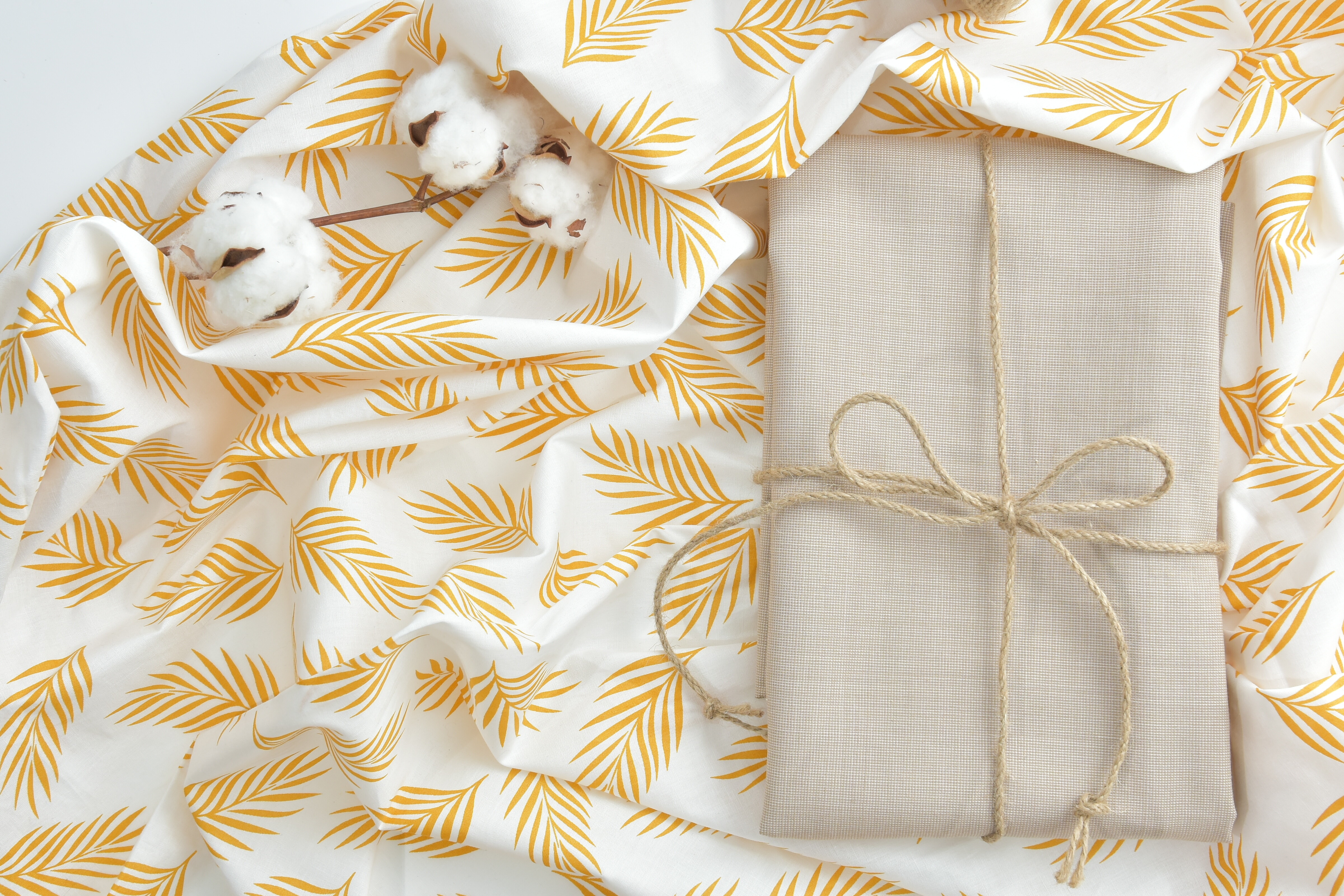Textiles play a crucial role in our daily lives, surrounding us both at home and at work. Widely used across various fields, textile materials are an integral part of our culture and lifestyle.
Cotton Fabrics

Satin
Satin is a fabric with a smooth, shiny surface and a dense structure. It is manufactured through a special weaving technique. Satin is used for making bed linens, sleepwear, dresses, and other high-quality clothing.
Denim
Denim is a sturdy fabric with a characteristic weave that creates a texture with diagonal patterns. It is made from yarns of varying densities. Denim is used for producing denim clothing, jackets, shirts, skirts, and accessories.
Calico
Calico is a lightweight, durable, and breathable fabric with a tight weave. It has good color fastness and is ideal for printing. Calico is used for making bed linens, dresses, blouses, as well as for craft and artistic projects.
Muslin
Muslin is a soft, lightweight, and airy fabric with a delicate texture. It is made from fine cotton yarns using a special weaving technique. Muslin is perfect for producing summer clothing, children's items, swaddling blankets, scarves, and accessories.
Canvas
Canvas is a strong and dense fabric with a rough texture. It is made from thick cotton yarns and has high durability. Canvas is used for manufacturing bags, backpacks, tents, furniture upholstery, and other items requiring sturdy and durable fabric.
These popular cotton fabrics offer a variety of options for creating clothing, textiles, and accessories, combining comfort, durability, and style.
Linen Fabrics
.JPG)
Linen Fabric
Made from flax fibers, linen fabric is strong and durable. It has a natural matte appearance and a pleasant texture. Linen fabric is used for making clothing such as blouses, shirts, dresses, trousers, as well as for producing household textiles such as tablecloths, towels, and napkins.
Crepe
A fabric with a characteristic weave that creates small folds. Linen crepe has a more textured and voluminous structure compared to regular linen fabric. It is used for making summer clothing such as dresses, skirts, blouses, as well as for producing women's accessories and decorative elements.
Canvas
A lightweight and durable fabric with a rough texture, made from flax fibers. Linen canvas has waterproof and breathable properties. It is used for making outerwear such as coats, jackets, raincoats, as well as for producing fishing suits and specialized workwear.
Damask
A fabric with expressive patterns or designs created using special weaving techniques. Linen damask usually has a shiny surface and an elegant appearance. It is used for producing elegant clothing such as dresses, blouses, suits, as well as for decorative elements and interior items.
These popular linen fabrics offer a variety of options for creating stylish and comfortable clothing, as well as for producing home textiles and accessories.
Silk Fabrics
.JPG)
Charmeuse
One of the most popular types of silk fabric, characterized by a smooth surface, shine, and softness. It can be thin or dense, depending on the weaving method. It is used for making elegant clothing such as dresses, blouses, skirts, as well as for producing scarves, shawls, and bed linen.
Crepe de Chine
A fabric with an uneven texture and a granulated effect created by a special weaving technique. It has an interesting and original appearance. It is used for making evening and cocktail dresses, as well as for producing accessories such as scarves, ties, and handkerchiefs.
Organza
A lightweight and transparent fabric with a stiff structure and characteristic folds. It has a voluminous effect and airiness. It is used for making wedding and evening dresses, as well as for creating decorative elements such as frills, ruffles, and flounces.
Silk Satin
A fabric with a smooth shiny surface and dense weaving of threads. It has a pleasant texture and silky luster. It is used for making bed linen such as sheets, pillows, and blankets, as well as for producing women's underwear.
Silk Gauze
A thin and lightweight fabric with a loose weave, giving it airiness and transparency. Silk gauze has an elegant and refined appearance. It is used for making lightweight summer dresses, blouses, and scarves, as well as for creating decorative elements and accessories.
These popular silk fabrics offer a variety of options for creating stylish and sophisticated clothing, as well as for producing decorative and interior elements.
Synthetic Fabrics
The modern textile industry offers a wide variety of contemporary fabrics. They excellently mimic the properties of natural materials and are characterized by their affordable price.
Polyester
A durable, resilient, and easy-to-care-for material. It dries quickly and maintains its shape and color well. Resistant to fading. Widely used in the production of clothing (blouses, dresses, trousers), bedding, curtains, household textiles, and furniture.
Nylon (Polyamide)
Strong, elastic, abrasion-resistant, dries quickly, possesses good moisture-wicking properties, and is resistant to fading and mechanical damage. Used in the production of clothing (underwear, stockings, swimwear, sportswear), underwear, socks, curtains, umbrellas, and backpacks.
Acrylic
Soft, warm, lightweight, dries quickly, retains its shape well, mimics wool or cotton, and withstands mechanical stress well. Used in the production of clothing (sweaters, scarves, hats), blankets, carpets, soft furniture, and toys.
Elastane (Spandex)
Highly elastic. Recovers its shape after stretching. Provides freedom of movement. Combines well with other fabrics. Widely used in the production of elastic clothing (jeans, T-shirts, sportswear, underwear), swimsuits, headwear, and gloves.
Polyurethane (Spandex)
Elastic, soft, lightweight, resistant to abrasion, retains its shape well, and has water-repellent properties. Used in sportswear, underwear, swimsuits, elastic clothing for pregnant women, and medical compression garments.
These synthetic fabrics are widely used in the textile industry due to their diverse properties.
You can read about fabrics with a memory effect HERE.
